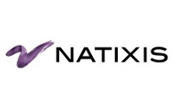Today’s global investment banking market continues to be shaped by the need for innovation and synergies driven by an evolving regulatory landscape. We have identified the Five Cs for success in securities finance for both our clients and ourselves. This framework encourages us that while a constriction in liquidity has been felt industry-wide, nimble and fast moving institutions can successfully adapt to new market conditions.
Prior to the regulatory shift of the past few years, balance sheets were not constrained, meaning leverage was not constrained. Under these conditions, a bank could secure high Return on Equity (ROE) without the need for an exorbitant Return on Assets (ROA) – because a highly-leveraged transaction could perform well in that environment.
This strategy is no longer possible: banks must optimize their assets as regulations require low leverage and much higher capital levels. Today, the only way to increase ROE is to secure better ROA, which is driven by balance sheet-oriented business. The more that banks optimize securities finance business lines, the more return they are able to generate from an ROA perspective, which translates into ROE.
In order to drive value to our clients, Natixis in the US has adopted a cross-asset financing model that extends past equity finance to capture a wide range of physical and synthetic products, with a focus on ROA. Traditionally, a bank will have multiple desks for each type of financing offered (equities, Treasuries, etc.), meaning slippage can be high as various desks are independently communicating to clients. A more efficient platform offers one securities financing relationship across asset classes. This allows for the type of optimization necessary to drive growth while still complying with liquidity and capital restrictions.
The key to successfully executing this strategy revolves around how a bank integrates the Five Cs of securities finance throughout its platform: collateral, capital, cash, clients and counterparties.
Collateral: optimization across asset classes
Collateral is a multi-dimensional challenge for both investment banks and their clients and is the most important of the Five Cs. It is no longer sufficient to think in terms of one collateralized transaction, for example cash against an equities securities loan or posting US Treasuries for another Treasury borrow. Collateral in fact is often a complex puzzle, where the optimal solution requires a combination of portfolio optimization and data management.
A strong advantage for a bank in today’s market is the ability to support clients with analytics that support recommendations on collateral optimization. This is a type of outsourcing that many clients can benefit from today and may continue to benefit from long into the future. The fact is, creating an internal infrastructure for collateral management at buy-side firms, especially mid-size hedge funds, is not easy with a set of constrained resources. A bank with broader resources, distributing the benefits of internal technology and data across a client base, is a helpful partner.
Capital: diversifying transactions enables greater business opportunities
It is well known that balance sheet is a limiting factor in the ability of prime brokers to provide leverage to hedge fund clients. The natural question is what to do about it? Prime brokers have been aware of this obstacle for some time, and hedge funds are now responding proactively to help enable prime brokers to conduct more business. Optimizing the utilization of financial resources is the common goal of the prime broker-hedge fund relationship.
Hedge funds have several options with regards to financial resources optimization. One strategy is to remove the balance sheet cost from prime brokers of holding hedge fund cash in their accounts. This can be accomplished in several ways, including collateral-for-collateral in securities lending transactions, originating more cross-asset transactions, and rolling excess cash to outside investment accounts. Either way, hedge fund clients are able to take proactive steps that directly assist their prime brokerage relationships. They may also wind up assisting nontraditional prime brokers, or new business models at existing prime brokers that do not utilize capital.
Cash: a shift to new structures and complexity for ALM
For the past few years, we’ve seen an increasing number of counterparties move towards non-cash collateral, and most brokers prefer to transact through central counterparties (CCPs). Straight cash bilateral transactions are becoming less of a market standard than historically. A surge in collateral upgrade or downgrade transactions has been the result, with assets like US Treasuries exchanged for corporate bonds or equities.
To relieve liquidity pressures on cash, banks are executing a wider variety of evergreen extendable and non-traditional liability structures. This has forced Asset Liability Management (ALM) techniques to become more technical and quantitative than in the past, when the main decision was whether a financing transaction would be rolled over or if cash would be returned. ALM must dynamically consider a range of new options and variables.
Clients: new types of firms mean new types of financing
In addition to hedge funds, whose involvement in securities lending has a long history, insurance companies and pensions are becoming more active participants. Their different sets of needs, including financing their own long High Quality Liquid Assets for cash to reinvest elsewhere, is driving innovation. While securities finance utilization at hedge funds will always be larger than at insurance companies and pensions, these new actors will shift the market.
We are already seeing insurance companies and pensions driving the growth of flex-repo loans and contingent upgrades. Flex-repo loans can be withdrawn at any time, offering the cash provider liquidity plus a healthy yield for the period of investment. Contingent upgrades are repo transactions that are available to meet a firm’s potential requirements but may not execute until called upon. In both cases, insurance companies and pensions receive both investment opportunities and the ability to access financing when needed.
Counterparties: centralization and synthetics
As the utilization of CCPs grows, the opportunity to mix physical and synthetic transactions has taken on new dimensions. Integrated securities finance desks can use these products interchangeably with clients, and may prefer one over the other depending on netting and balance sheet requirements. We expect this trend to accelerate as financing businesses adjust to full implementation of the Leverage Ratio alongside existing requirements of the Liquidity Coverage Ratio. In addition, Single Counterparty Credit Limits render CCP usage more preferable than bilateral transactions as CCPs are exempted from this rule.
Looking Ahead
Capital and leverage regulations have led to cash preservation strategies that in turn have created a greater need for customized financing. The number of variables in every transaction has dramatically increased, and with this increase, banks are adapting the services and products they can provide their clients accordingly. One sharp change is the move from qualitative to quantitative approaches in securities finance across repo and client optimization algorithms and ALM modeling. Where financing and collateral were previously thought of as a one-dimensional problem, this has evolved into a multi-dimensional challenge requiring a rigorous analytical and quantitative approach.
The investment banking world is at a turning point. While the evolving regulatory landscape is nothing new, the corresponding trends it is driving are shifting before our eyes. At Natixis in the US we are adapting the Five C approach to optimize our financial resources, opening the door for innovations in securities finance. Clients are gravitating to one-stop-shop models that offer the ability for cross-asset financing, blending both physical financing and derivatives. This requires careful integration of the Five Cs, with collateral being the main driver. Banks that can support this model will thrive in today’s global market.

Anand Krishnan is Head of Securities Finance Americas at Natixis. He is responsible for developing and leading all securities finance activities in the Americas, including Equity Finance, Government, Agency & Corporate Repo, and Structured Credit Repo. Anand has more than 15 years of financial services experience. He joined CIB Americas from Deutsche Bank, where he had worked for more than 8 years, most recently as Global Head of Global Prime Finance (GPF) Client Analytics & Portfolio Strategy and Head of Financial Resource Management – North America. Prior to Deutsche Bank, Anand worked at ING Financial Markets, Wachovia Bank and Lehman Brothers. Anand holds an MS in Computational Finance from Carnegie Mellon University, an MBA in Finance from the University of Bridgeport and a Bachelor’s in Applied Sciences from Coimbatore Institute of Technology (India).


